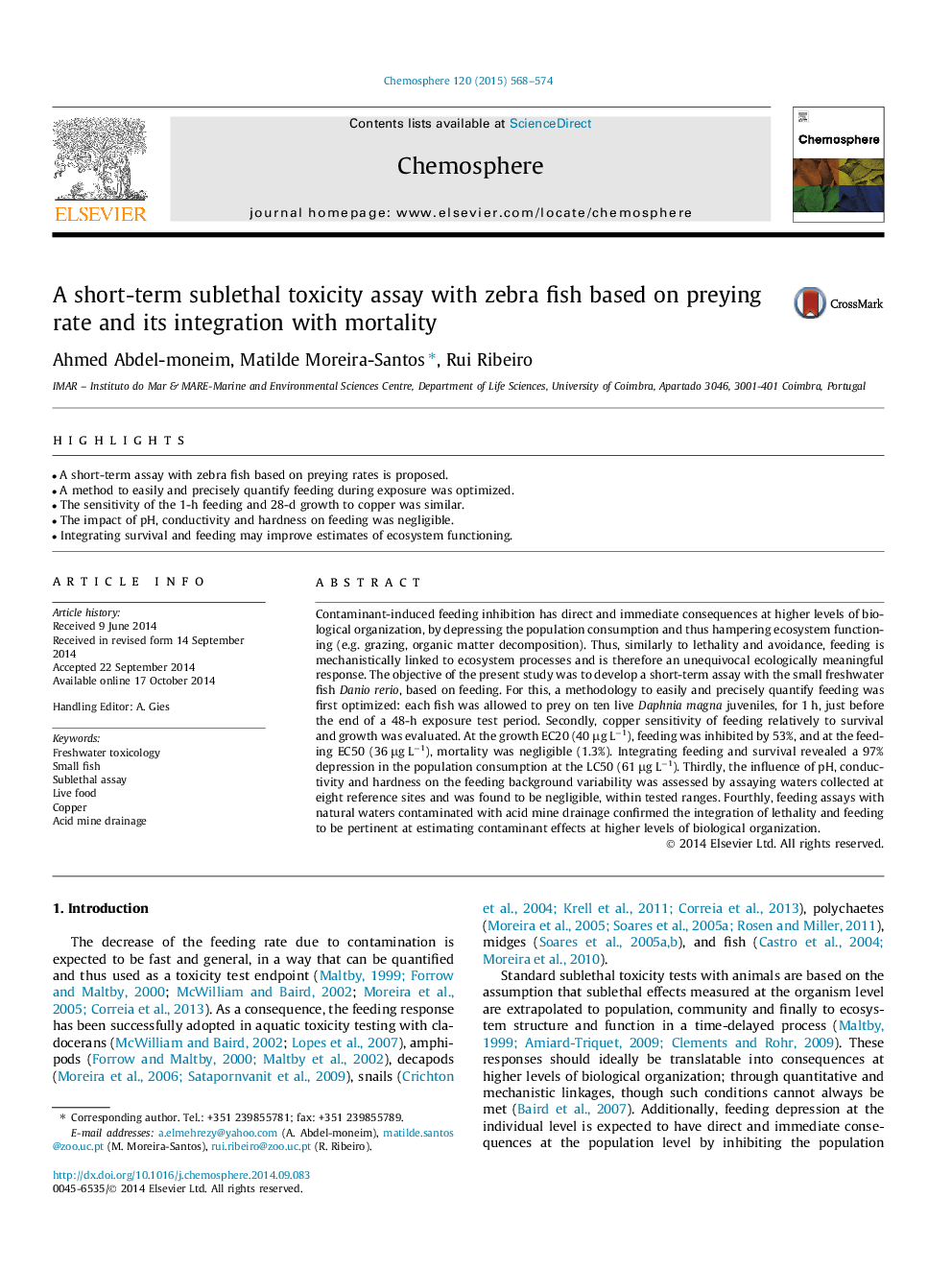| Article ID | Journal | Published Year | Pages | File Type |
|---|---|---|---|---|
| 6308272 | Chemosphere | 2015 | 7 Pages |
â¢A short-term assay with zebra fish based on preying rates is proposed.â¢A method to easily and precisely quantify feeding during exposure was optimized.â¢The sensitivity of the 1-h feeding and 28-d growth to copper was similar.â¢The impact of pH, conductivity and hardness on feeding was negligible.â¢Integrating survival and feeding may improve estimates of ecosystem functioning.
Contaminant-induced feeding inhibition has direct and immediate consequences at higher levels of biological organization, by depressing the population consumption and thus hampering ecosystem functioning (e.g. grazing, organic matter decomposition). Thus, similarly to lethality and avoidance, feeding is mechanistically linked to ecosystem processes and is therefore an unequivocal ecologically meaningful response. The objective of the present study was to develop a short-term assay with the small freshwater fish Danio rerio, based on feeding. For this, a methodology to easily and precisely quantify feeding was first optimized: each fish was allowed to prey on ten live Daphnia magna juveniles, for 1 h, just before the end of a 48-h exposure test period. Secondly, copper sensitivity of feeding relatively to survival and growth was evaluated. At the growth EC20 (40 μg Lâ1), feeding was inhibited by 53%, and at the feeding EC50 (36 μg Lâ1), mortality was negligible (1.3%). Integrating feeding and survival revealed a 97% depression in the population consumption at the LC50 (61 μg Lâ1). Thirdly, the influence of pH, conductivity and hardness on the feeding background variability was assessed by assaying waters collected at eight reference sites and was found to be negligible, within tested ranges. Fourthly, feeding assays with natural waters contaminated with acid mine drainage confirmed the integration of lethality and feeding to be pertinent at estimating contaminant effects at higher levels of biological organization.
